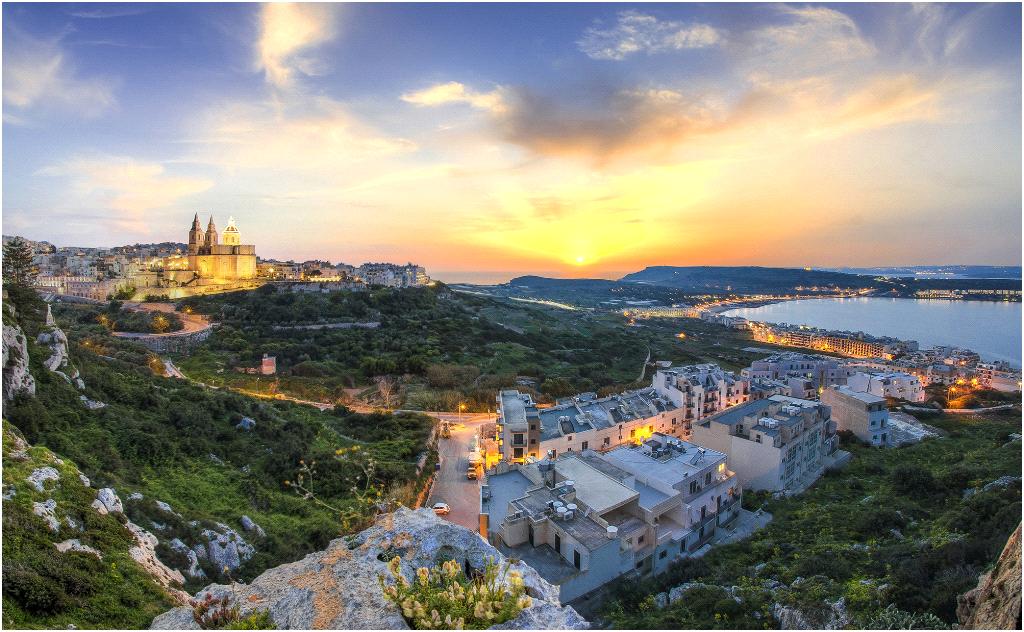
Mellieha (Maltese: il-Mellieha) is a large village or small town in the Northern Region of Malta. It has a population of 10,087 as of March 2014. Mellieha is also a tourist resort, popular for its sandy beaches and natural environment.
The name Mellieha is derived from the Semitic root m-l-h, which means salt. This is probably derived from the ancient Punic-Roman salt pans which existed at Mellieha Bay. The site of the salt pans is now occupied by the Ghadira Nature Reserve.
Prehistory to Middle Ages
Mellieha was first inhabited in around 3000 BC, during the Neolithic. Several megalithic remains have been found, including the temple of Ghajn Zejtuna, as well as several caves and tombs, in which tools and pottery fragments were found.
During the Roman period, troglodytes began to live in the caves of Mellieha's valleys. The cave settlements continued to exist during Byzantine rule, but were abandoned in the early medieval period.
According to the Acts of the Apostles, St. Paul was shipwrecked in Malta in around 60 AD, possibly in the nearby St. Paul's Bay. According to local tradition, St. Luke, who was accompanying St. Paul, came across one of Mellieha's caves and painted the figure of Our Lady on the rock face. In 409 AD, the cave was consecrated as a church, and it is now known as the Sanctuary of Our Lady of Mellieha.
Go Back to About Malta...